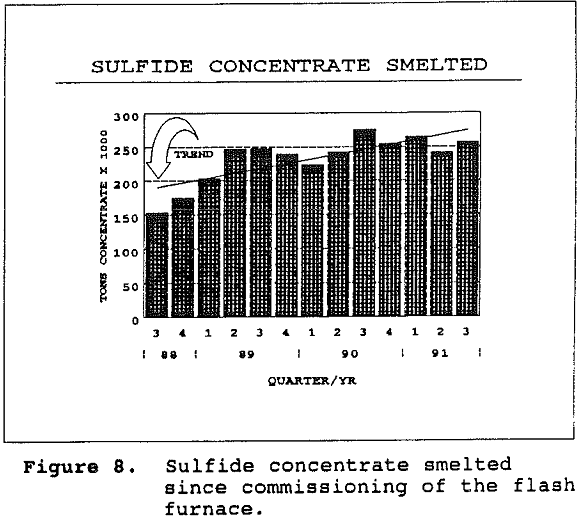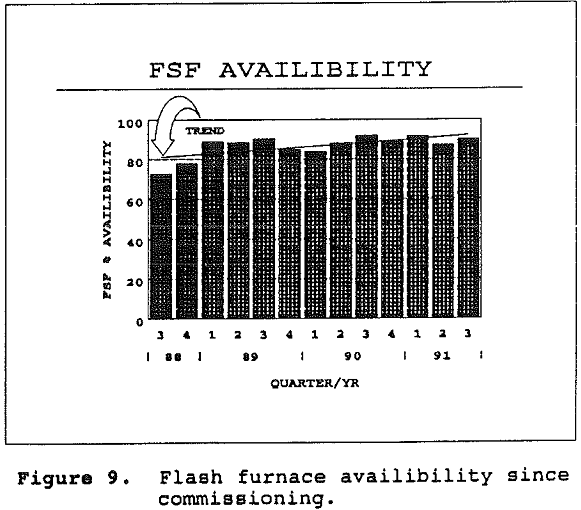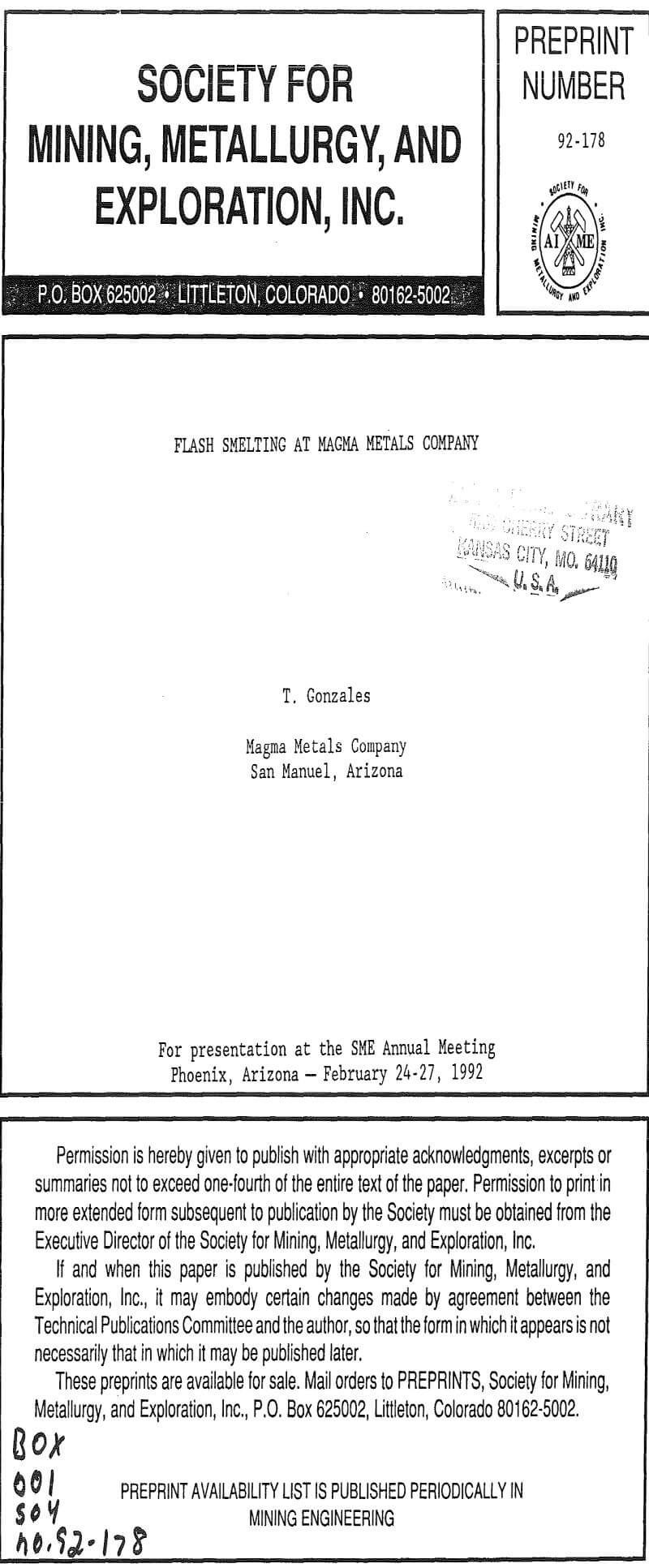Table of Contents
Process Flow Description: Concentrates and other copper bearing material are blended and conveyed from two separate areas of the plant to three 464 ton capacity wet charge bins located above the rotary dryer. Flash furnace silica flux is conveyed to a 250 ton capacity fine flux bin located adjacent to the wet charge bins. The concentrate and flux are blended in controlled amounts and fed into a 185 stph gas fired rotary dryer. The wet charge enters the dryer at 8% moisture and is dried to .2% moisture. The dried charge is pneumatically conveyed to a 640 ton dry charge bin located above the flash furnace.
Blister copper from the converters is fire refined in one of four anode refining vessels. The fire refining process includes a conventional oxidation stage for sulfur removal, followed by natural gas poling to remove oxygen. Fire refined copper is cast into 817 pound anodes in one of two casting wheels.
Flash Smelting Furnace
The basic Outokumpu flash furnace control strategy is to control the matte grade, silica content in the slag and product temperatures (matte and slag). Matte grade is controlled to 62%,±2%.
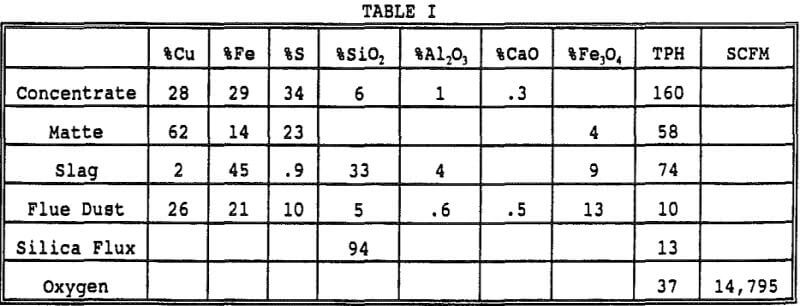
Concentrate and other copper bearing materials are blended to obtain the highest oxygen enrichment possible, while allowing latitude for matte grade changes. Enrichment is normally controlled between 65% to 74% O2. These enrichments provide the lowest flow of gas to the acid plant. Process gas flow ranges from 30,000 to 38,000 scfm.
The major problem encountered in the dryer is in the electrostatic precipitators (ESP). Magma has experienced three fires in the third field of the ESP. Each time the fields have been replaced during scheduled shutdowns.
Earlier problems of fluidization were a result of the design characteristics of the bin. The modifications made in March of 1990, which included the installation of a slotted dry charge bin discharge have been successful in overcoming the problem of fluidization.
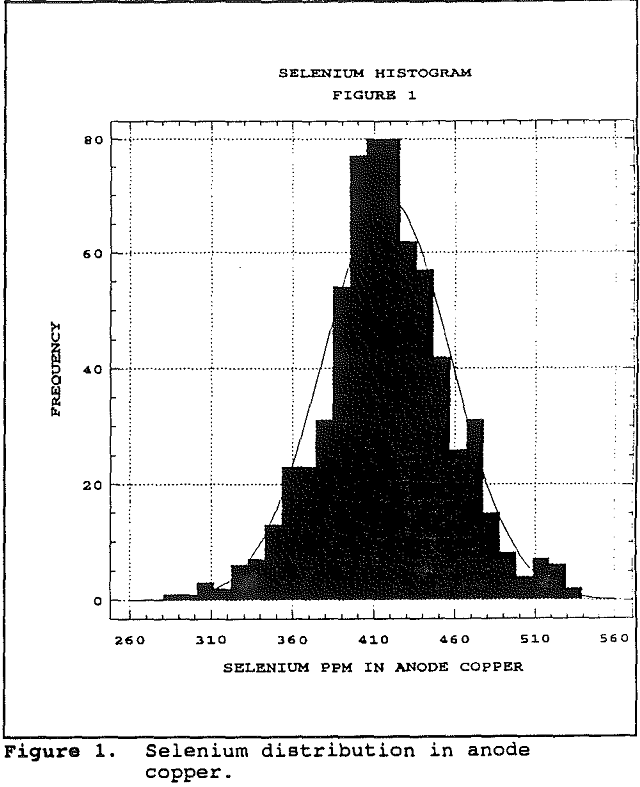
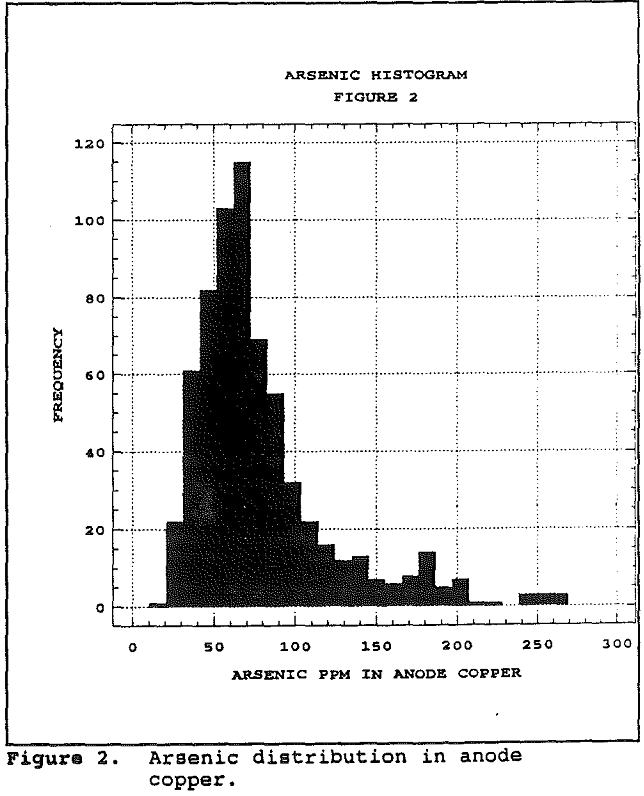
Some improvement was noticed after redesign, but the burner throat still needed a flow equalizing baffle to avoid preferential heating of the reaction shaft and settler roof.
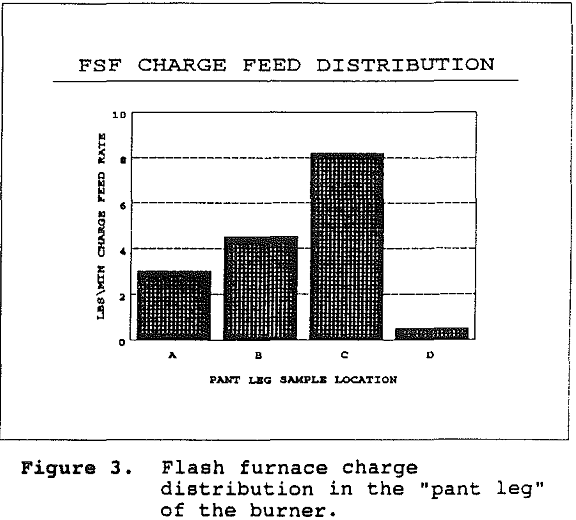
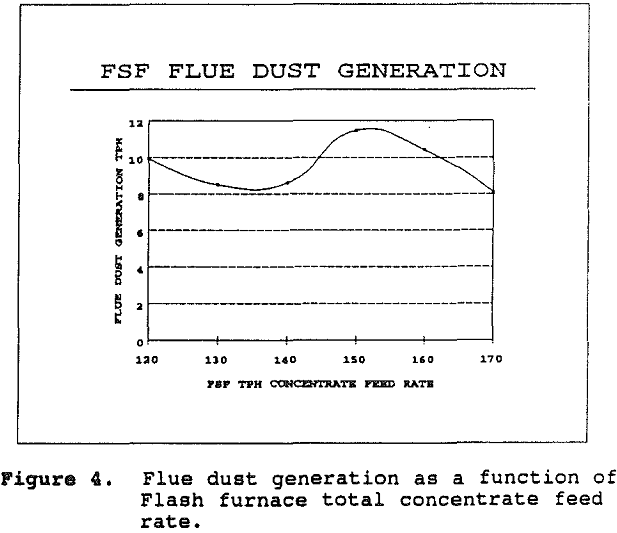
The reaction shaft heat loss is continuously monitored and is calculated from the increase in spray water temperature and flow. During normal operations a heat loss of 6 million to 8 million BTUs’per hour is observed. When heat loss increases above these levels, it is an indication that an upset burner condition exists.
The control philosophy for the converters includes scheduling of converter activity, slag metallurgical control, maximize blast air rate and revert consumption. Each of these topics is discussed below:
Converter skimming practice has always included the control of silica and magnetite in slags. Silica content in slags are controlled to within 28 to 32 percent. Magnetite is controlled to within 16 to 20 percent. Tuyere campaigns average 45,000 tons of copper for the 15 foot by 35 foot converters, and 32,000 tons for the smaller 13 foot by 35 foot converter.
Crane Aisle Reverts: Crane aisle reverts are generated from converter mouth splashing, spilled matte and slag, converter flue dust and spilled copper scrap. These material are periodically hauled out of the crane aisle, screened into a coarse and fine fraction. The coarse fraction is high in metallic copper and is remelted in a converter on copper blow. The fine fraction is fed to the converter through a conveyor during slag blows. Flue dust is used at the start of a copper blow.
The Converter department has created a committee of skimmers that make up a high performance team. High performance teams are self directed hourly employees.
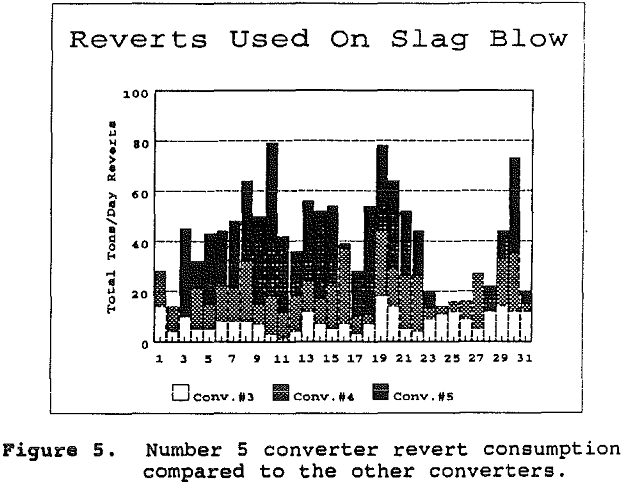
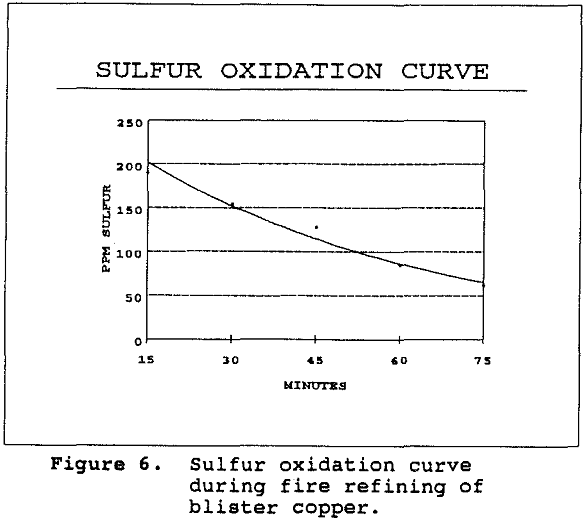
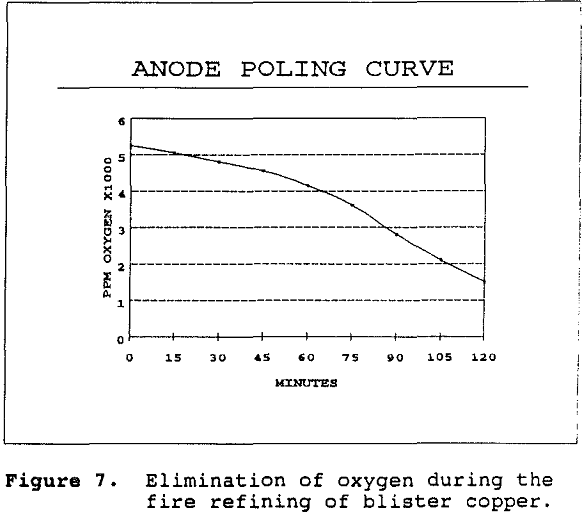
The Anode department consists of four anode refining vessels and two casting wheels. The No. 1 wheel has 28 molds and a casting rate of 70 tons per hour. No. 2 wheel has 20 molds and a casting rate of 40 tons per hour. Both wheels use scales to weigh molten copper before casting.
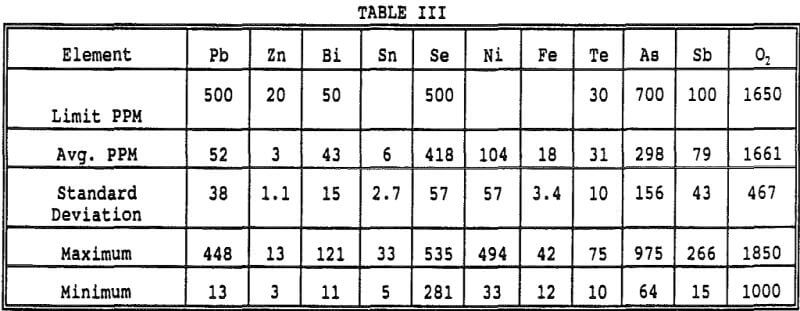
General Smelter Performance
Since commissioning of the flash smelter many problems have been encountered and solved. This learning process has resulted in a cyclic operation. The goal of the smelter is to strive for continual improvement.
The smelted tonnage of concentrate is indicative of achieving and exceeding design smelting rates. During 1991 flash furnace availability has averaged 90%. The average sulfur capture for 1991 is 98 percent. Acid plant availability has averaged 97 percent.
